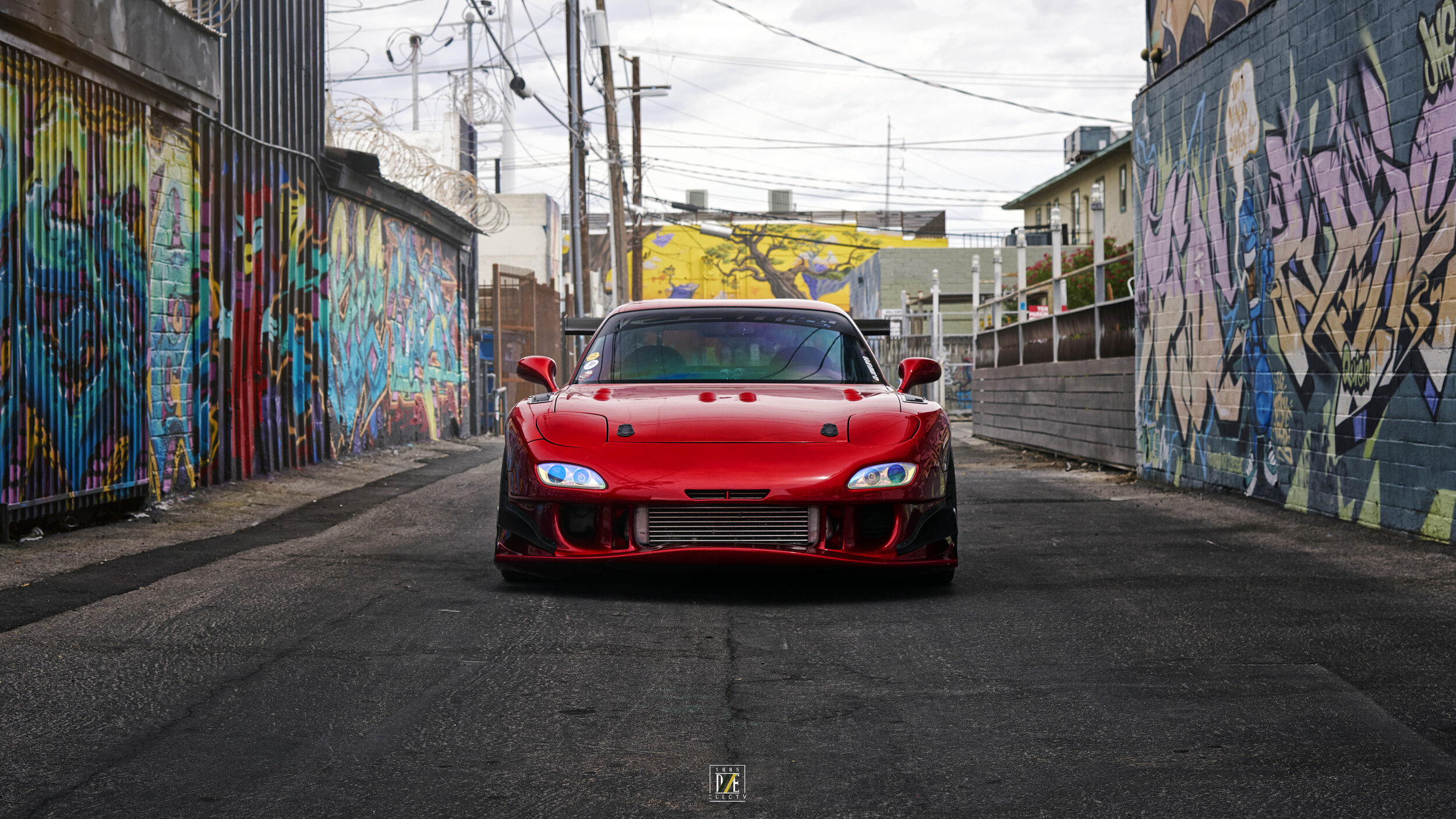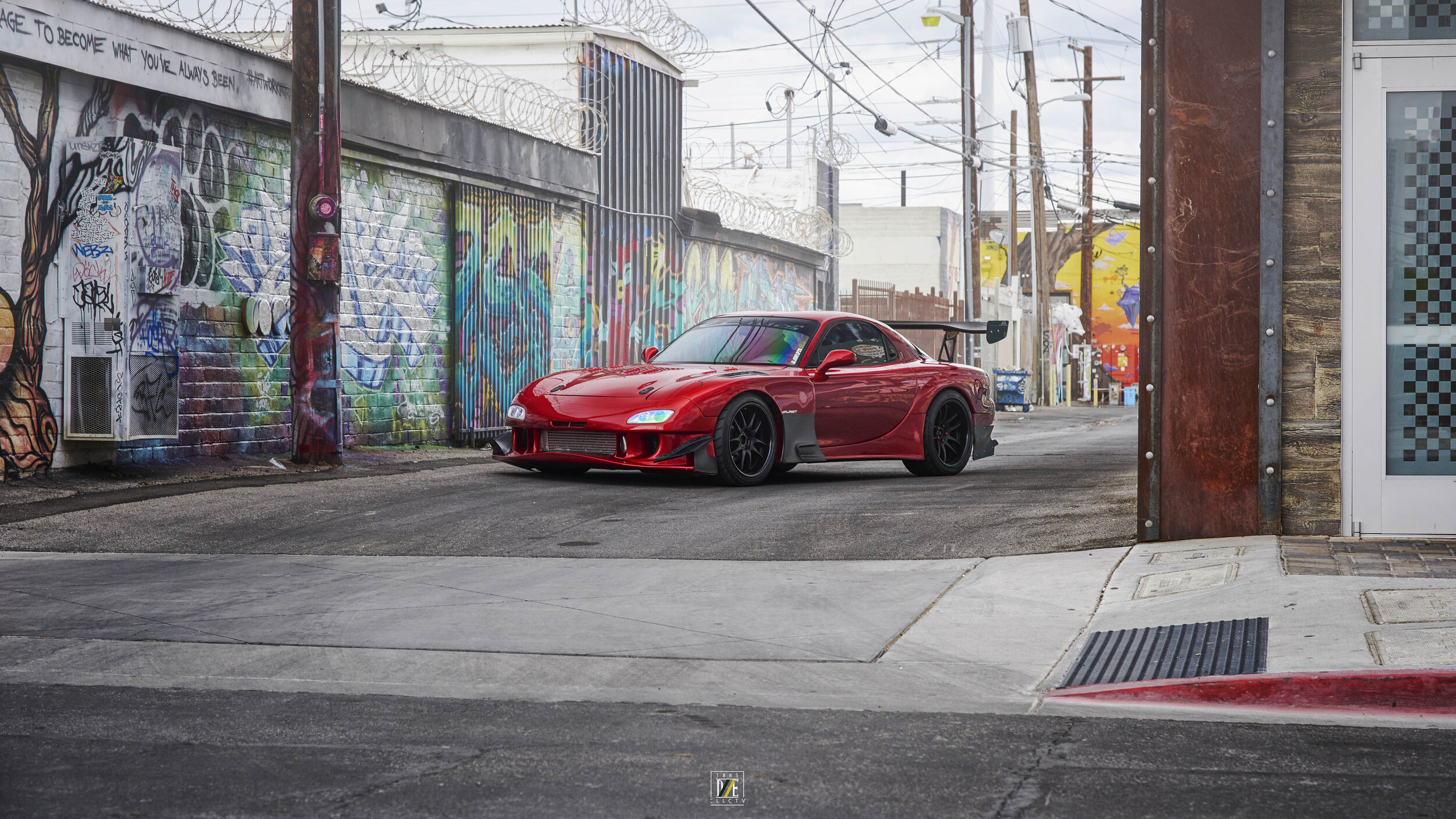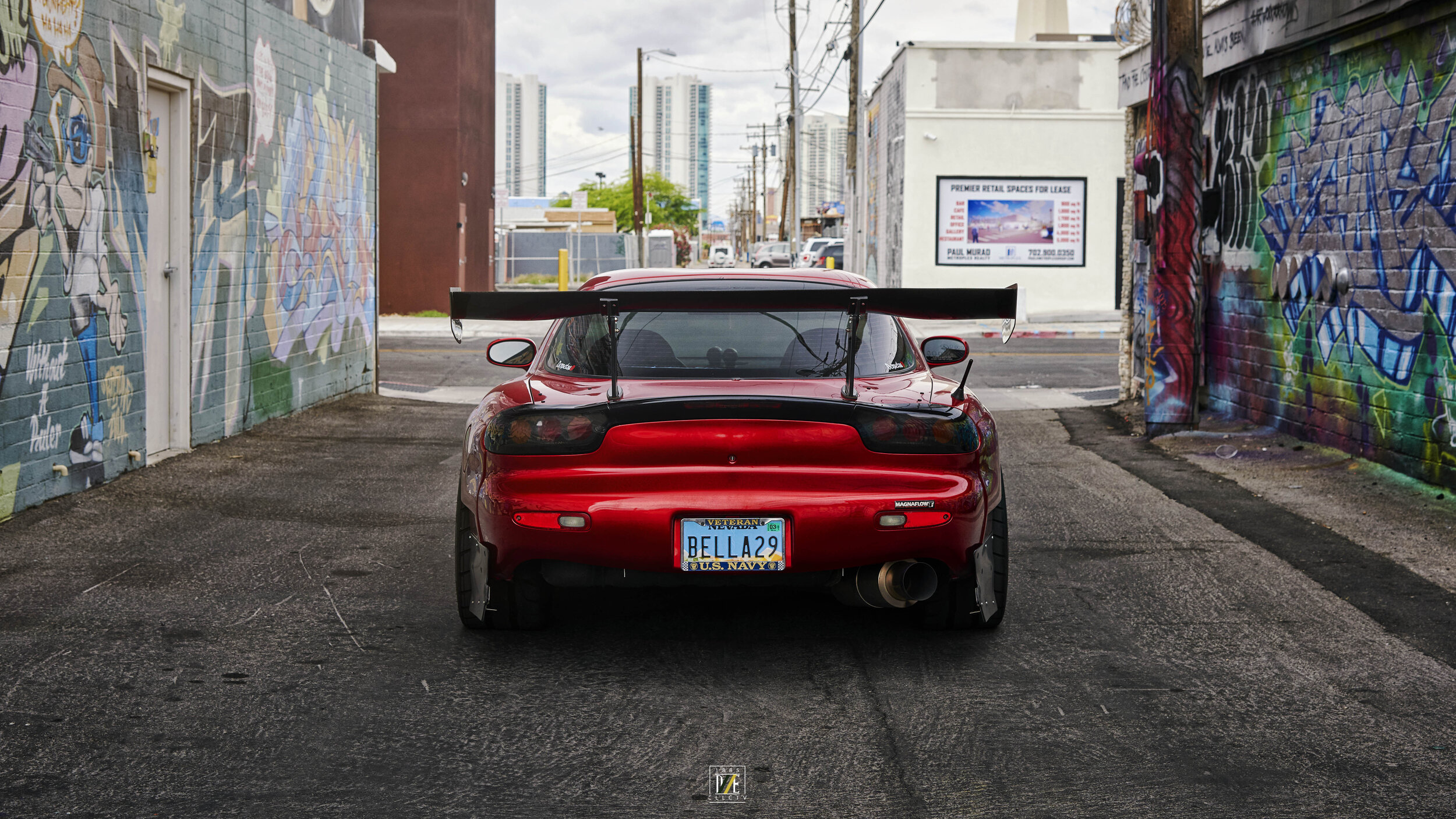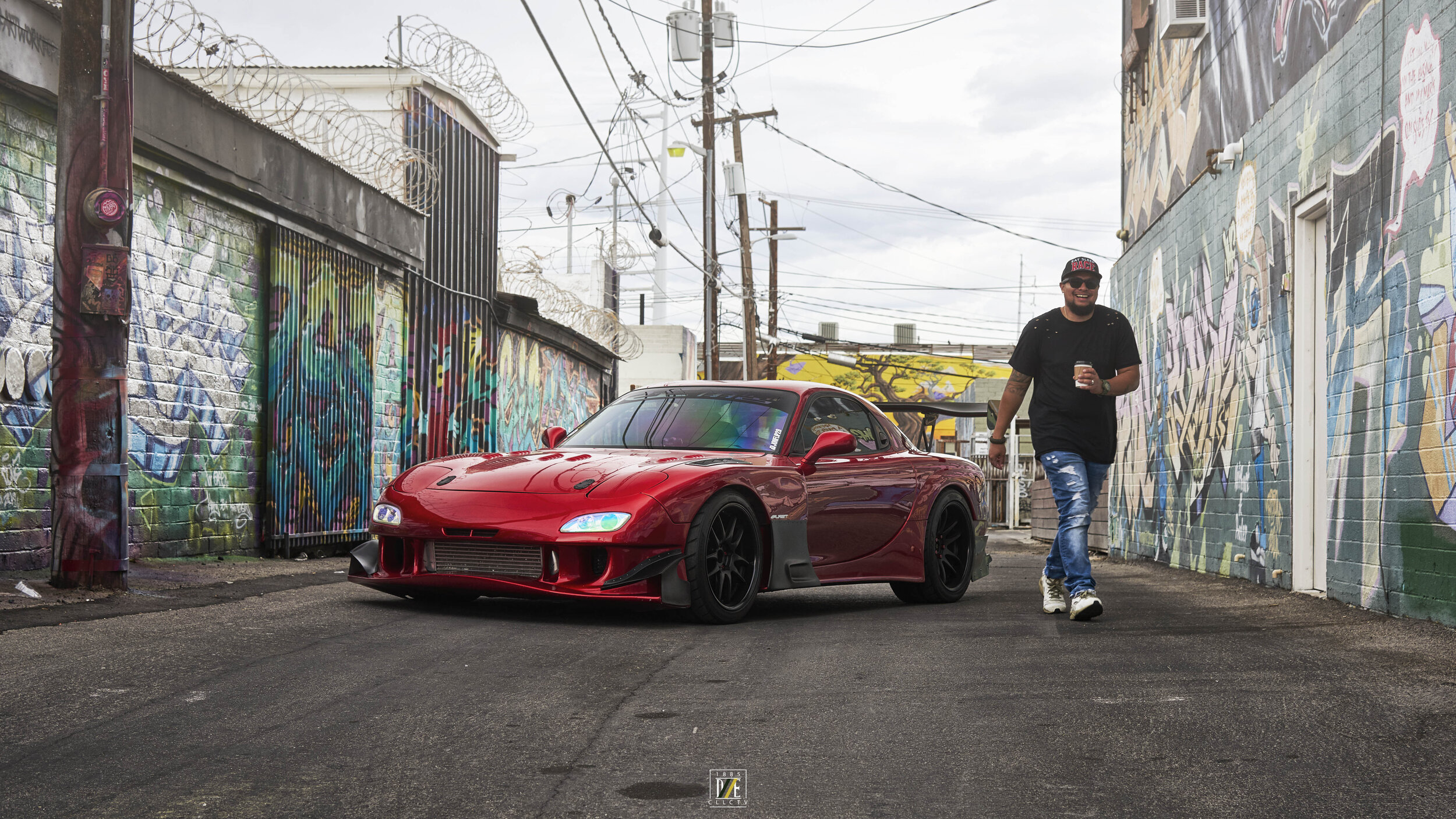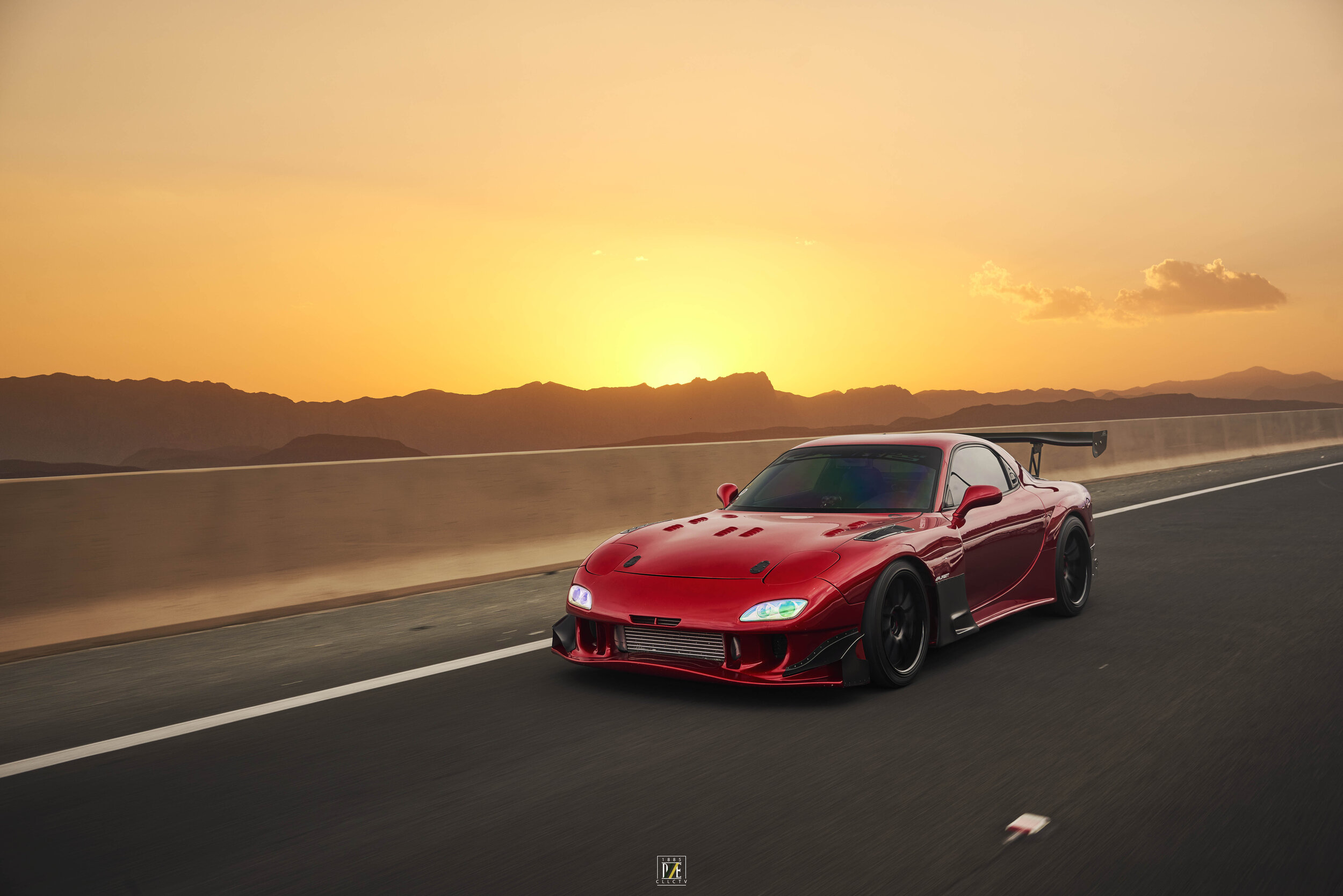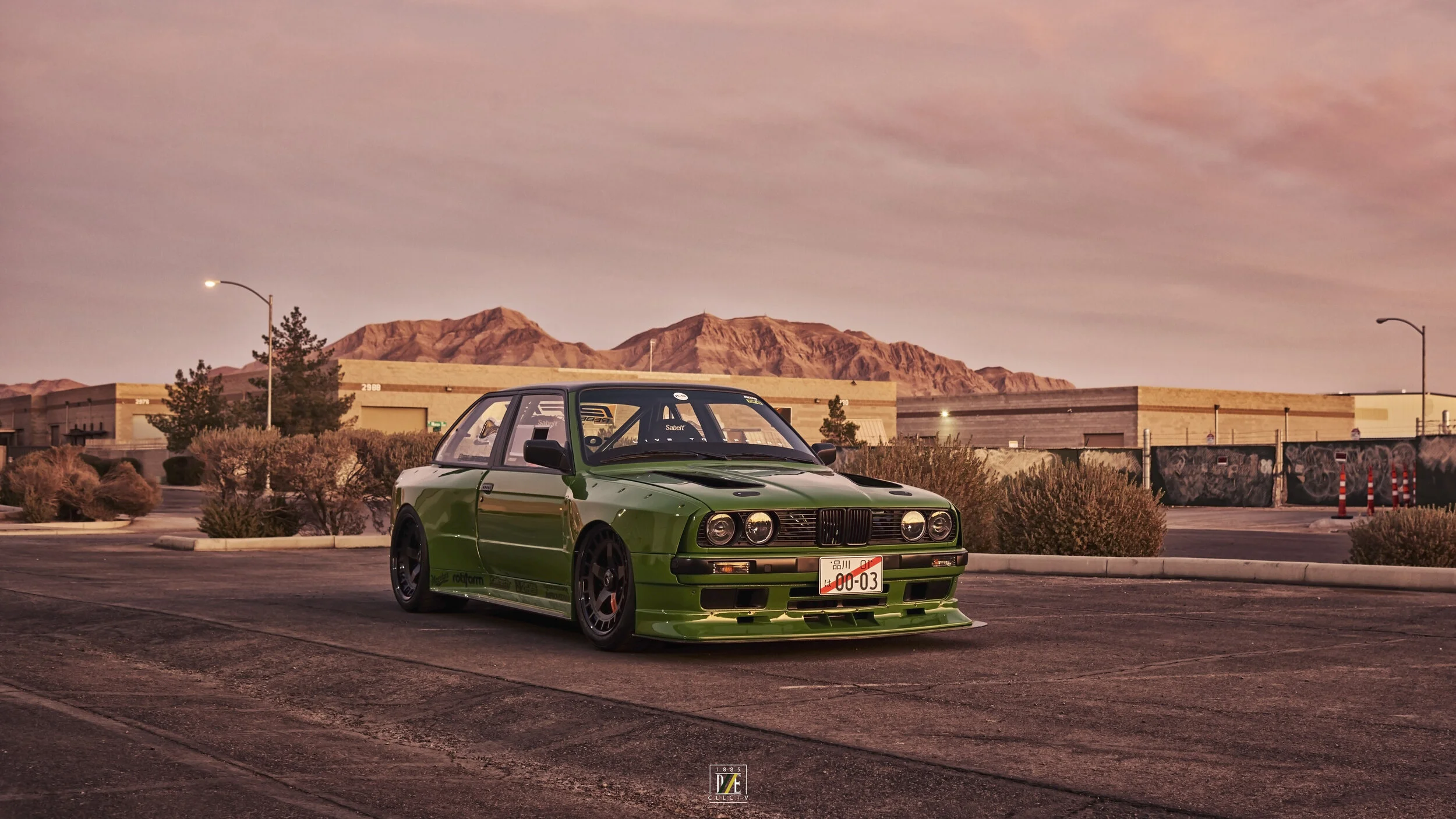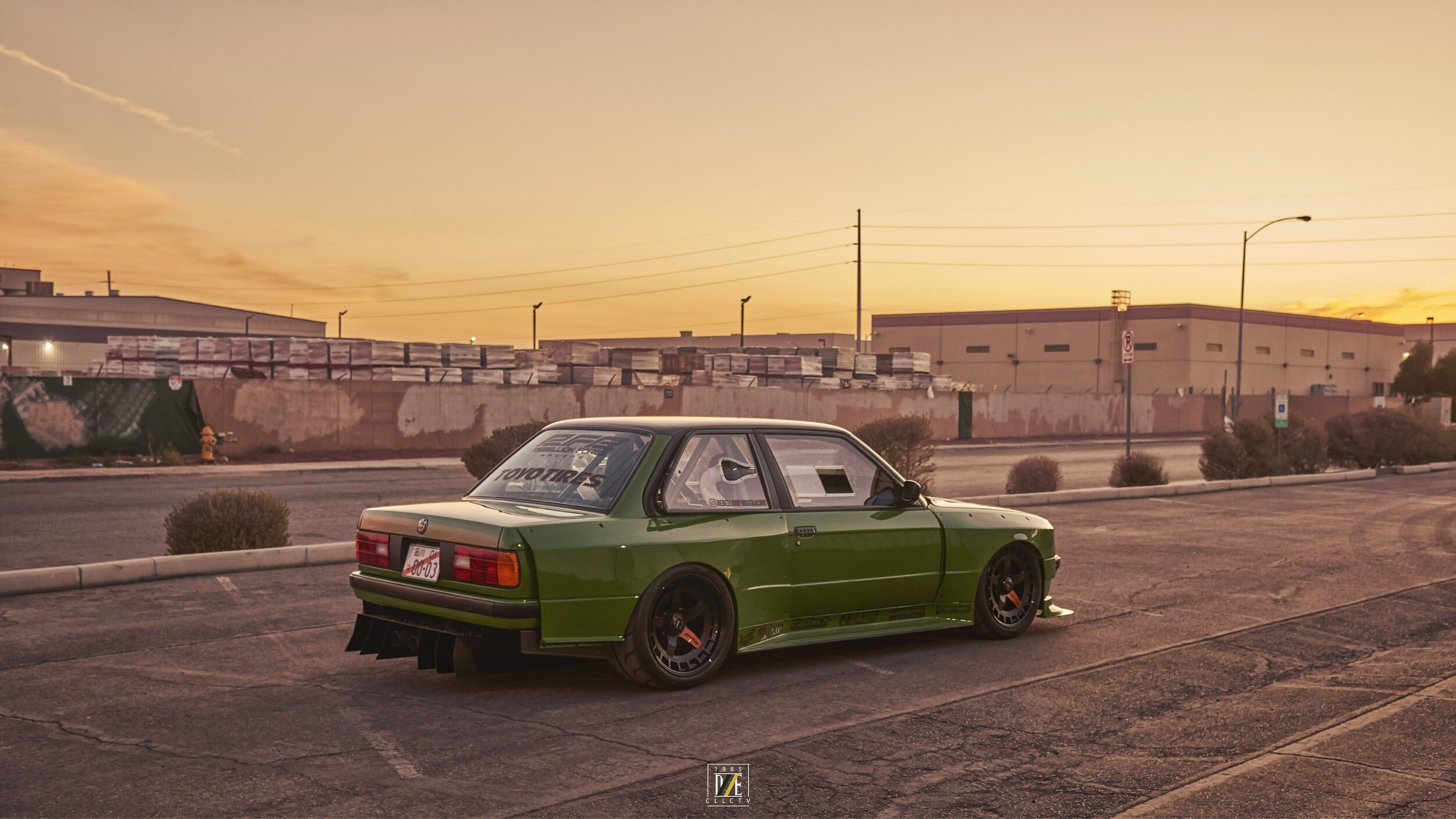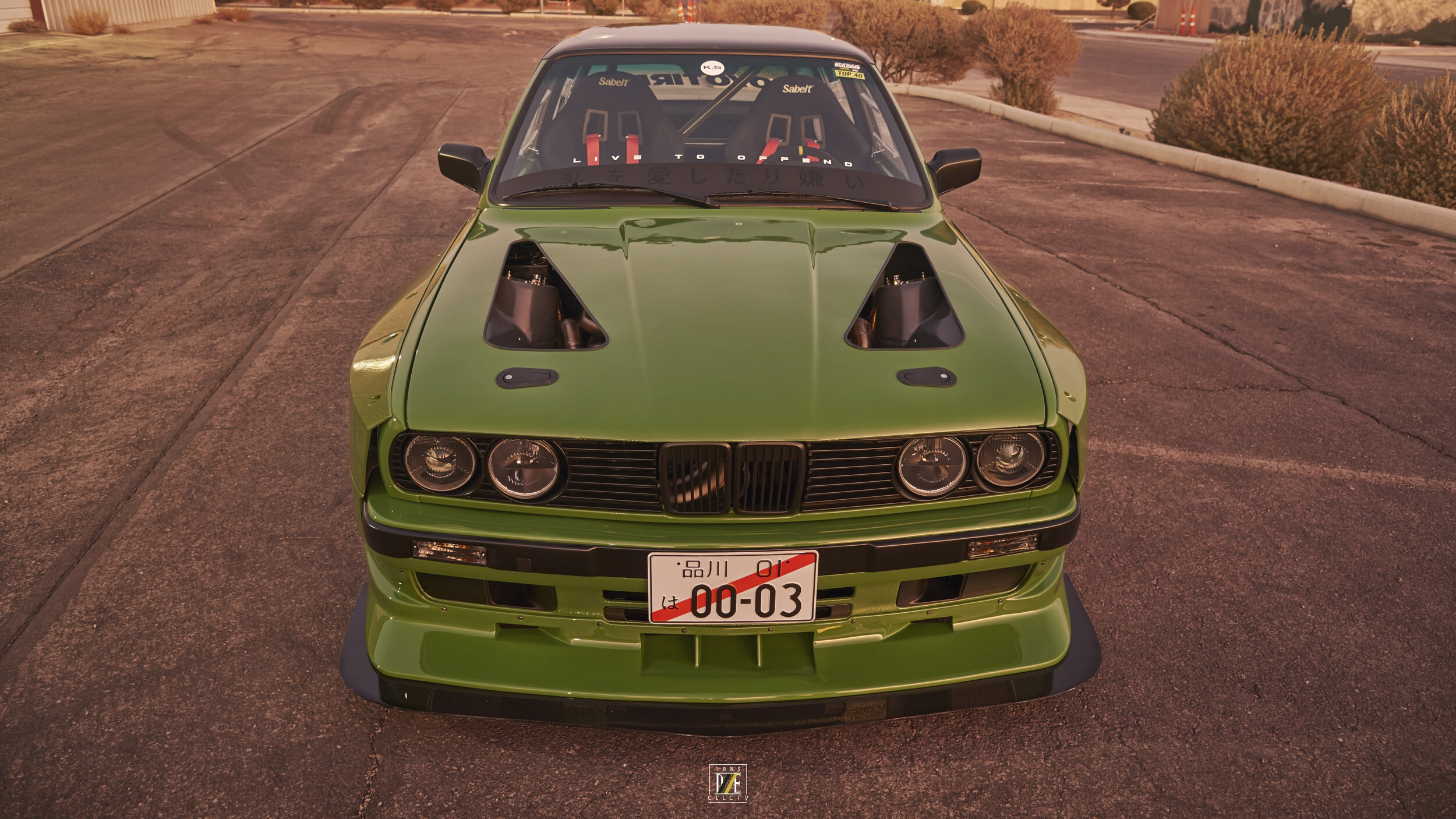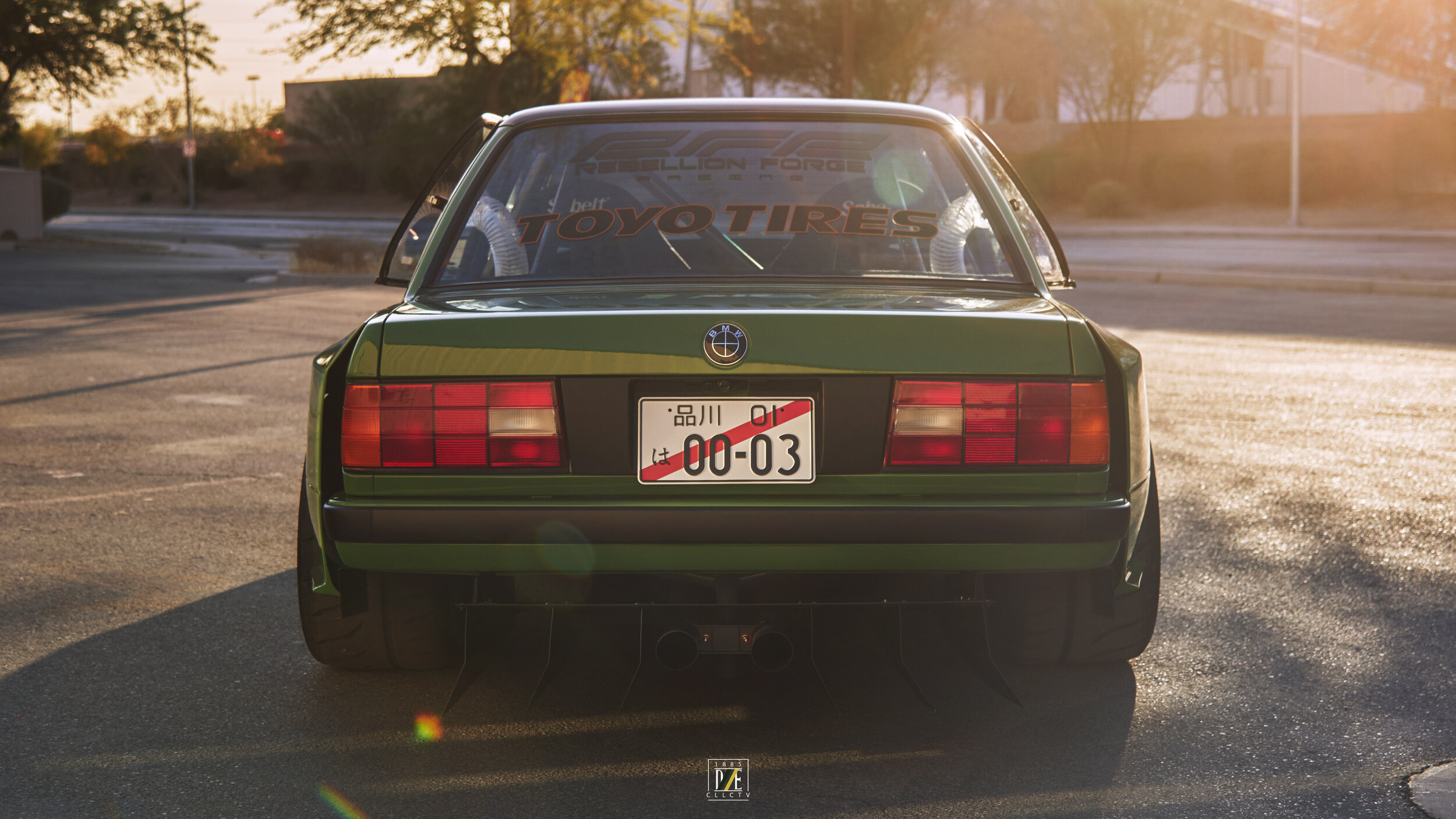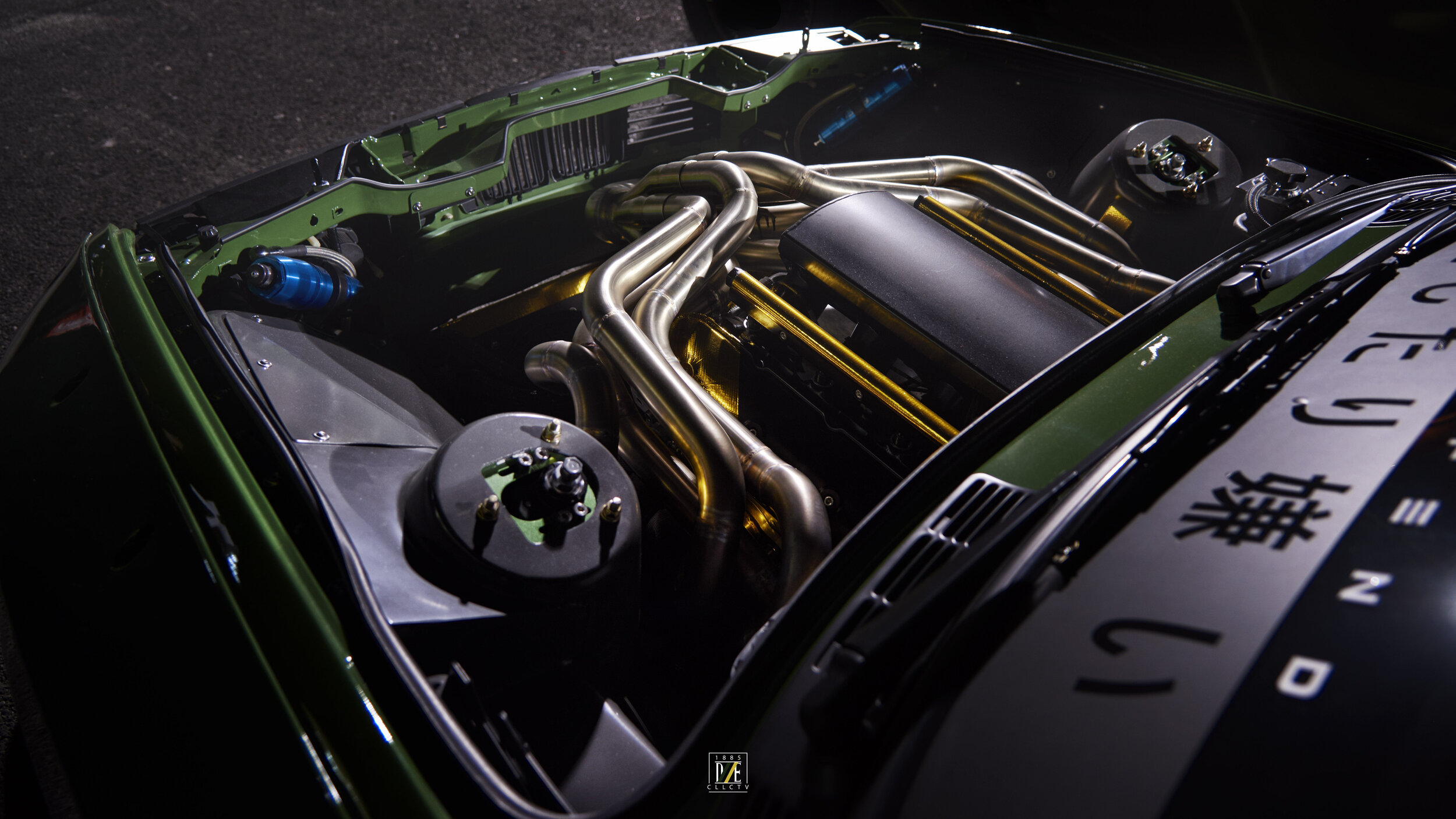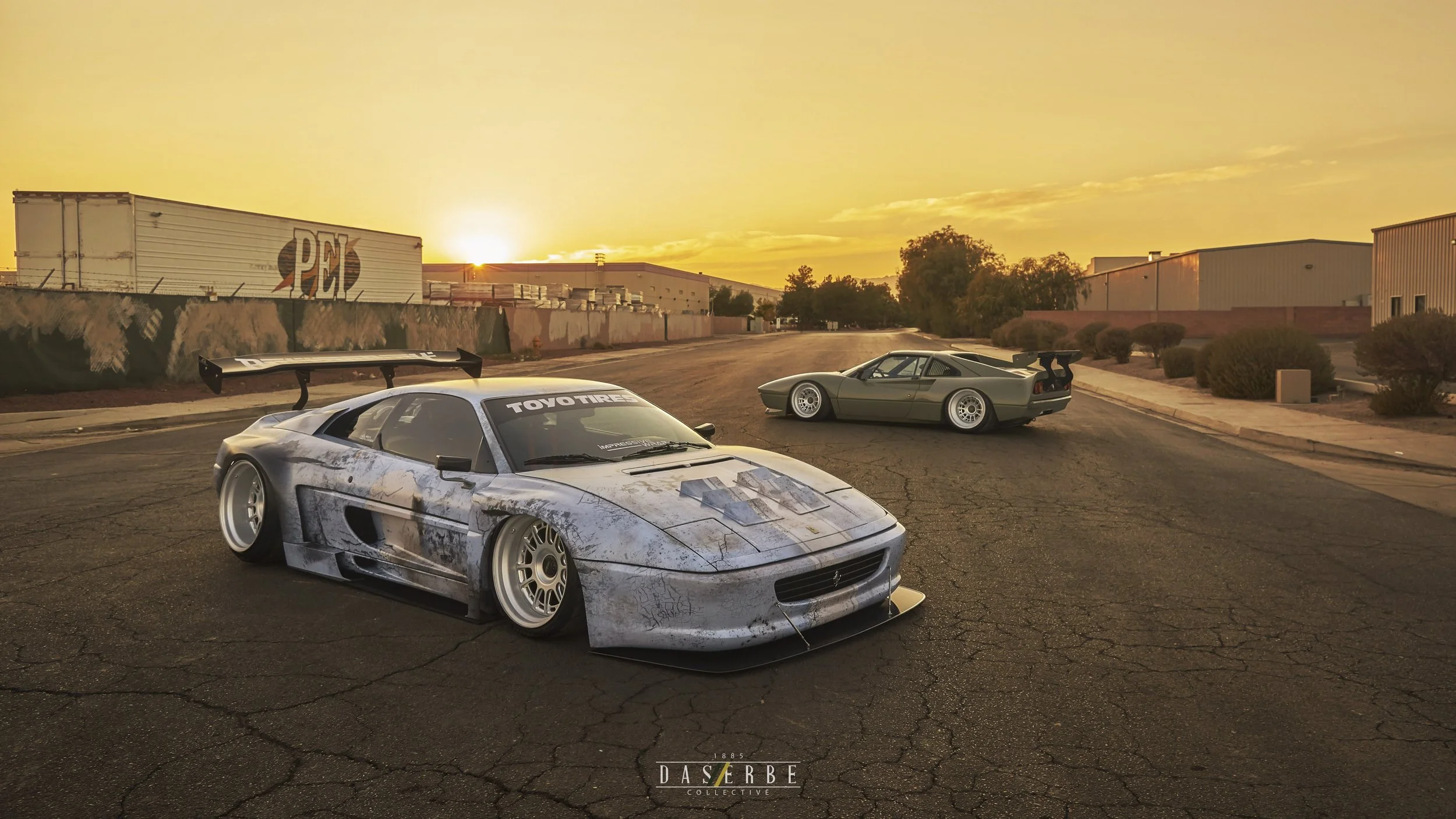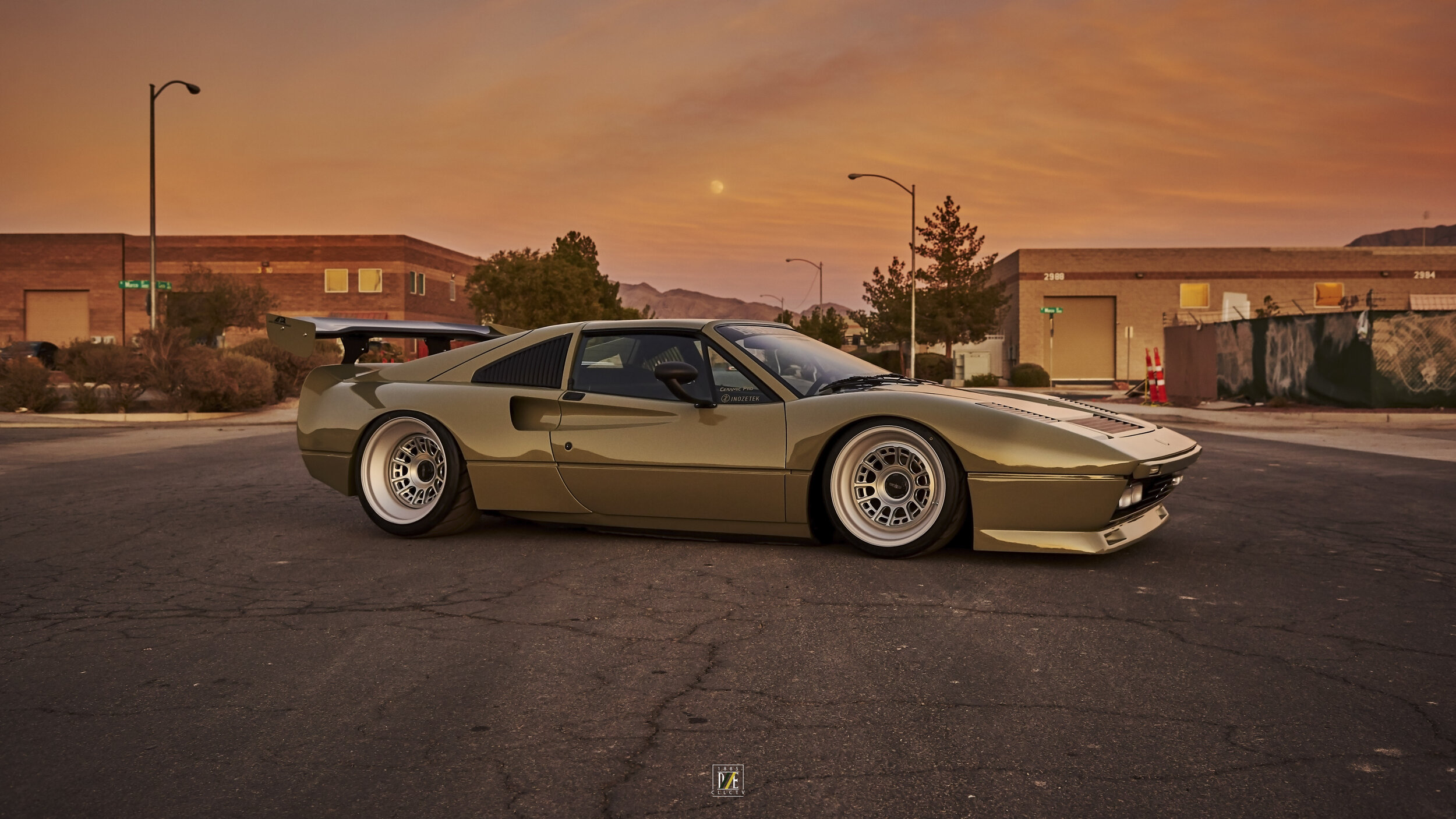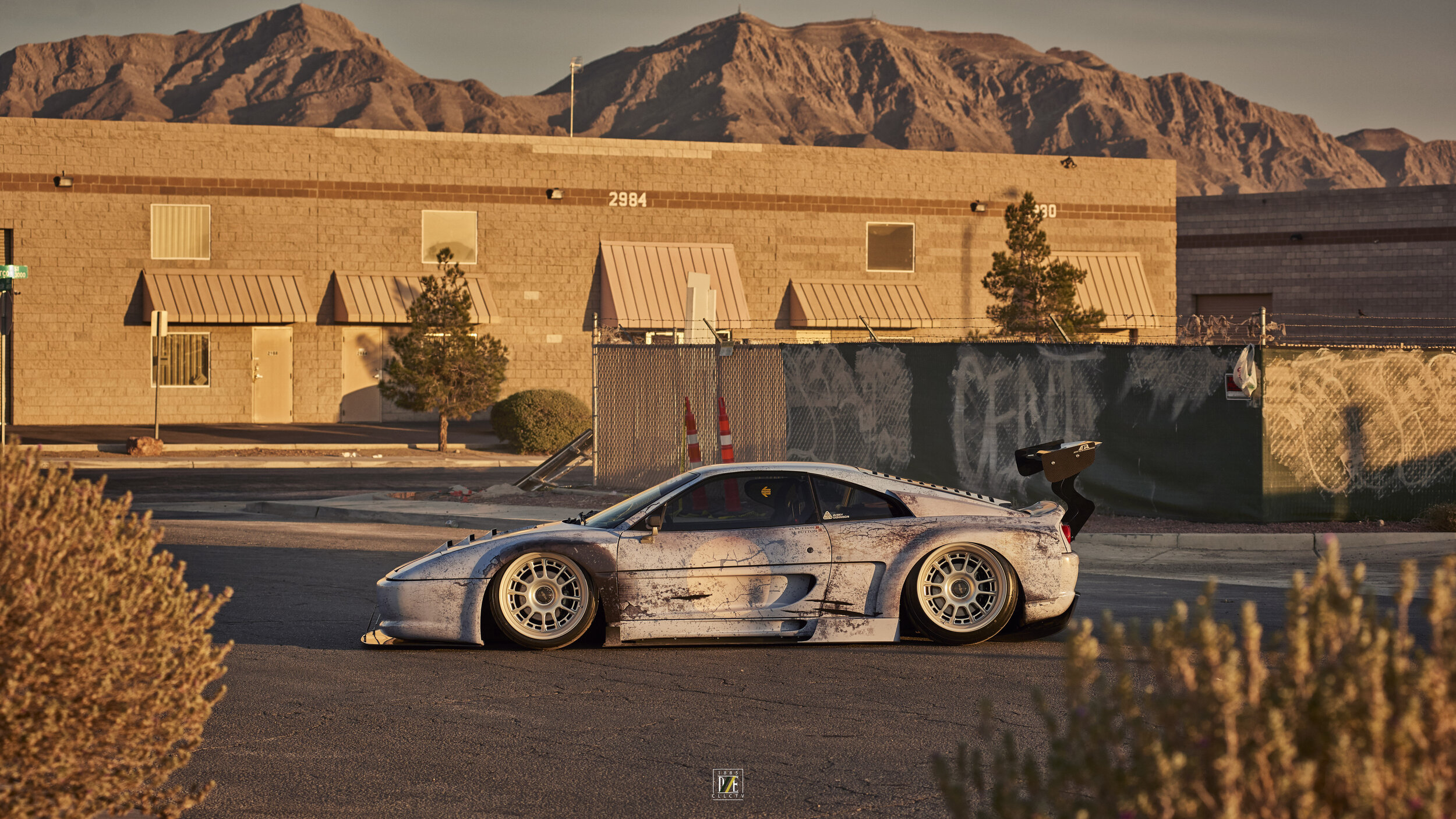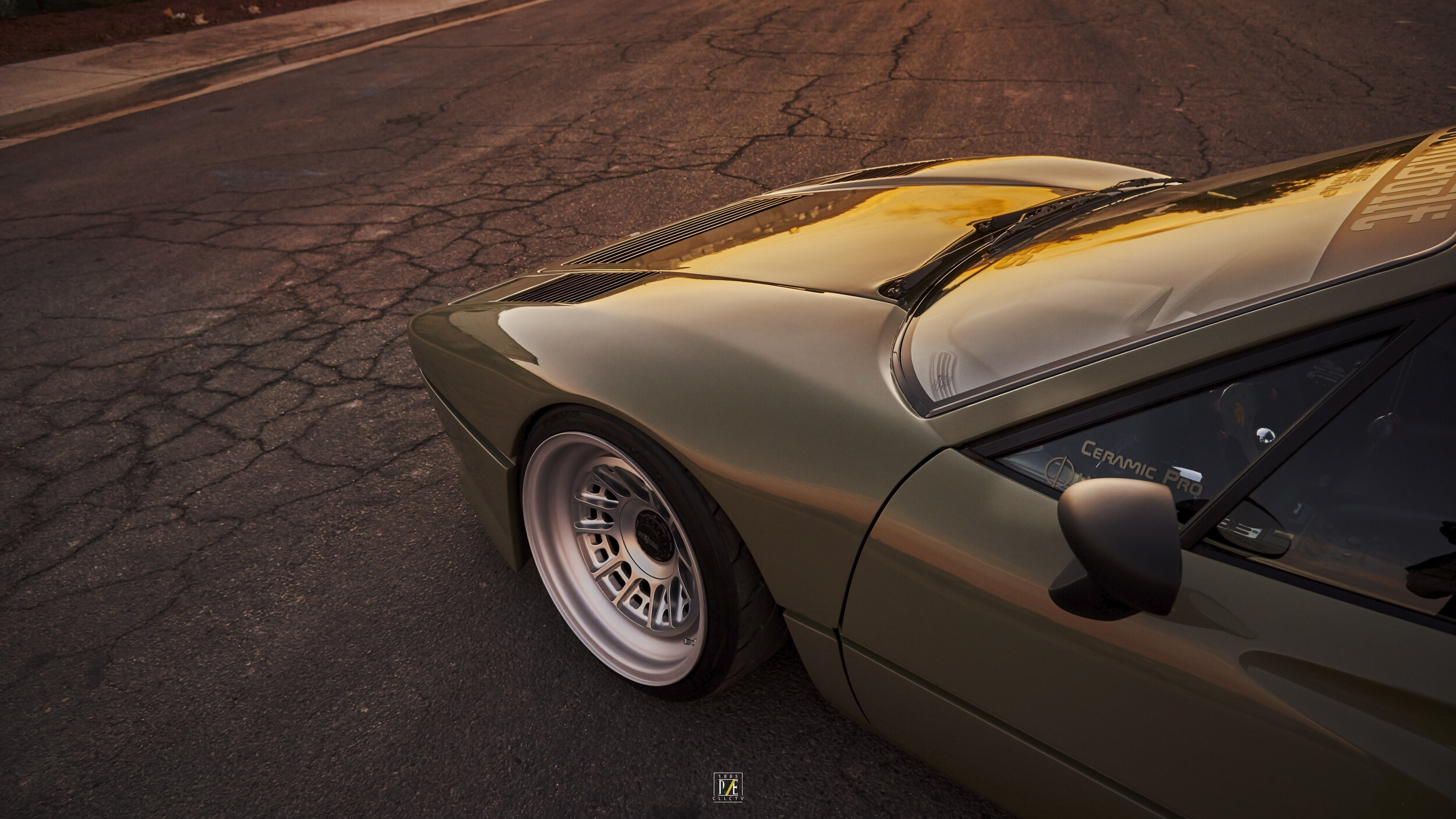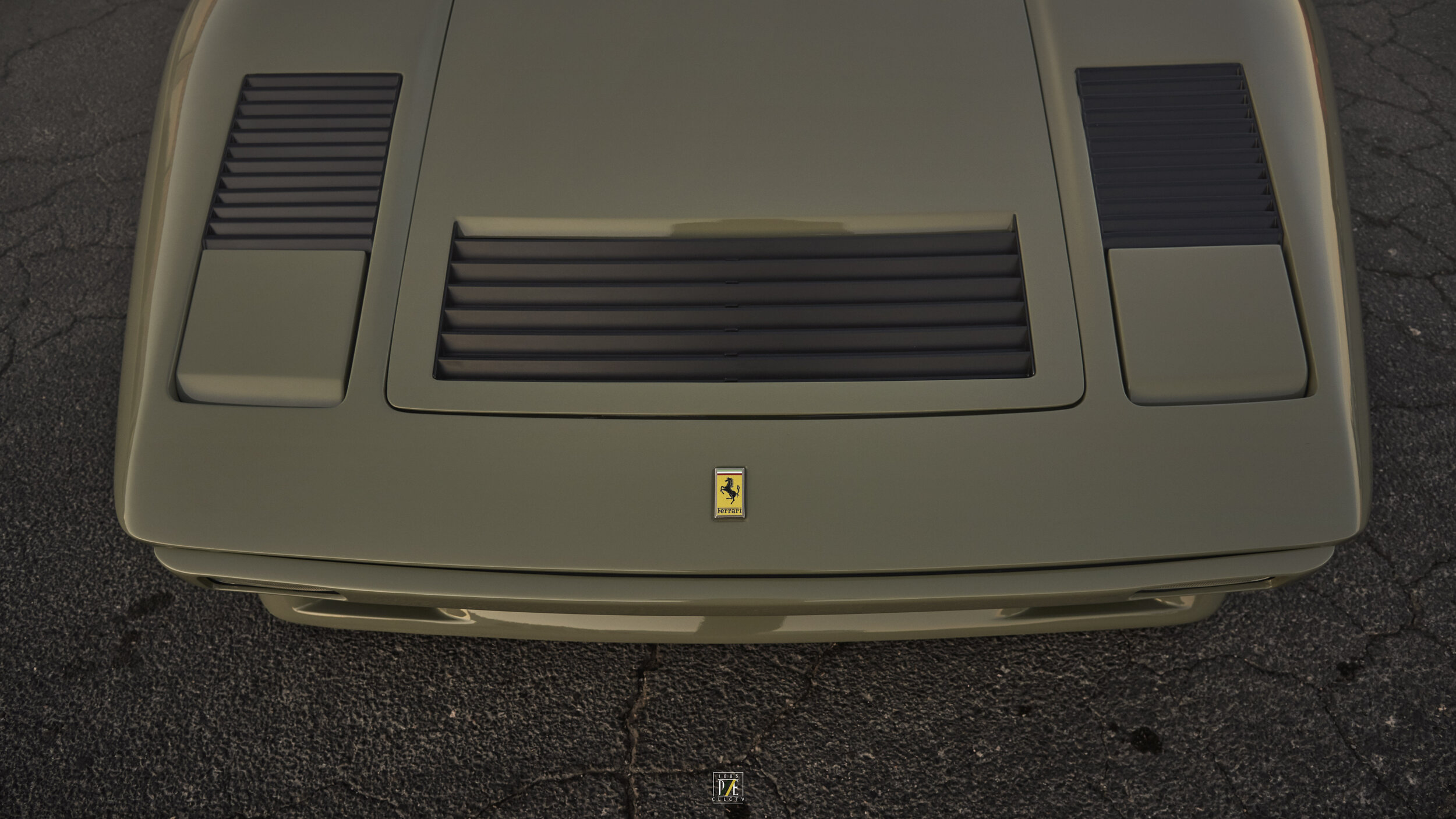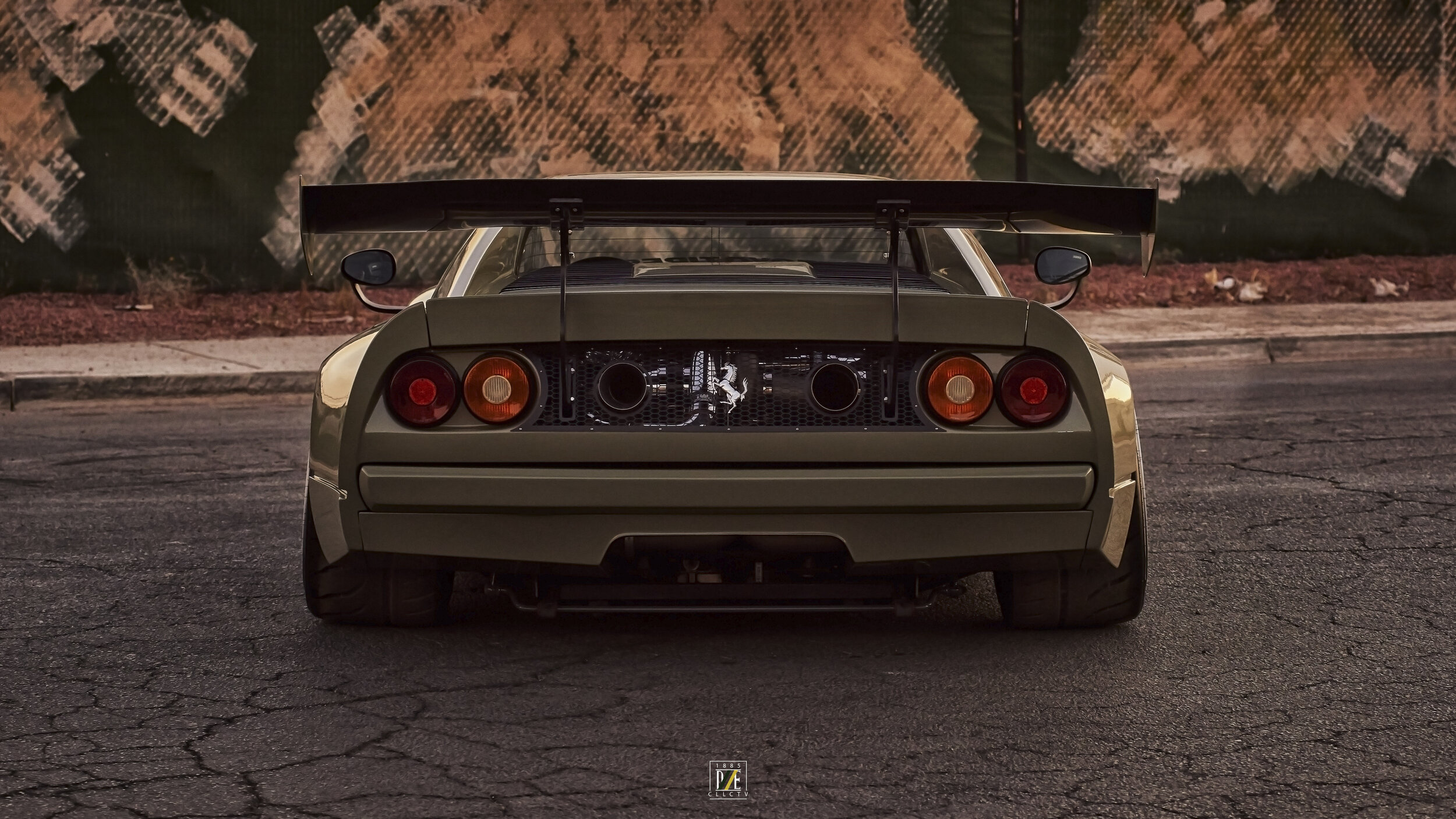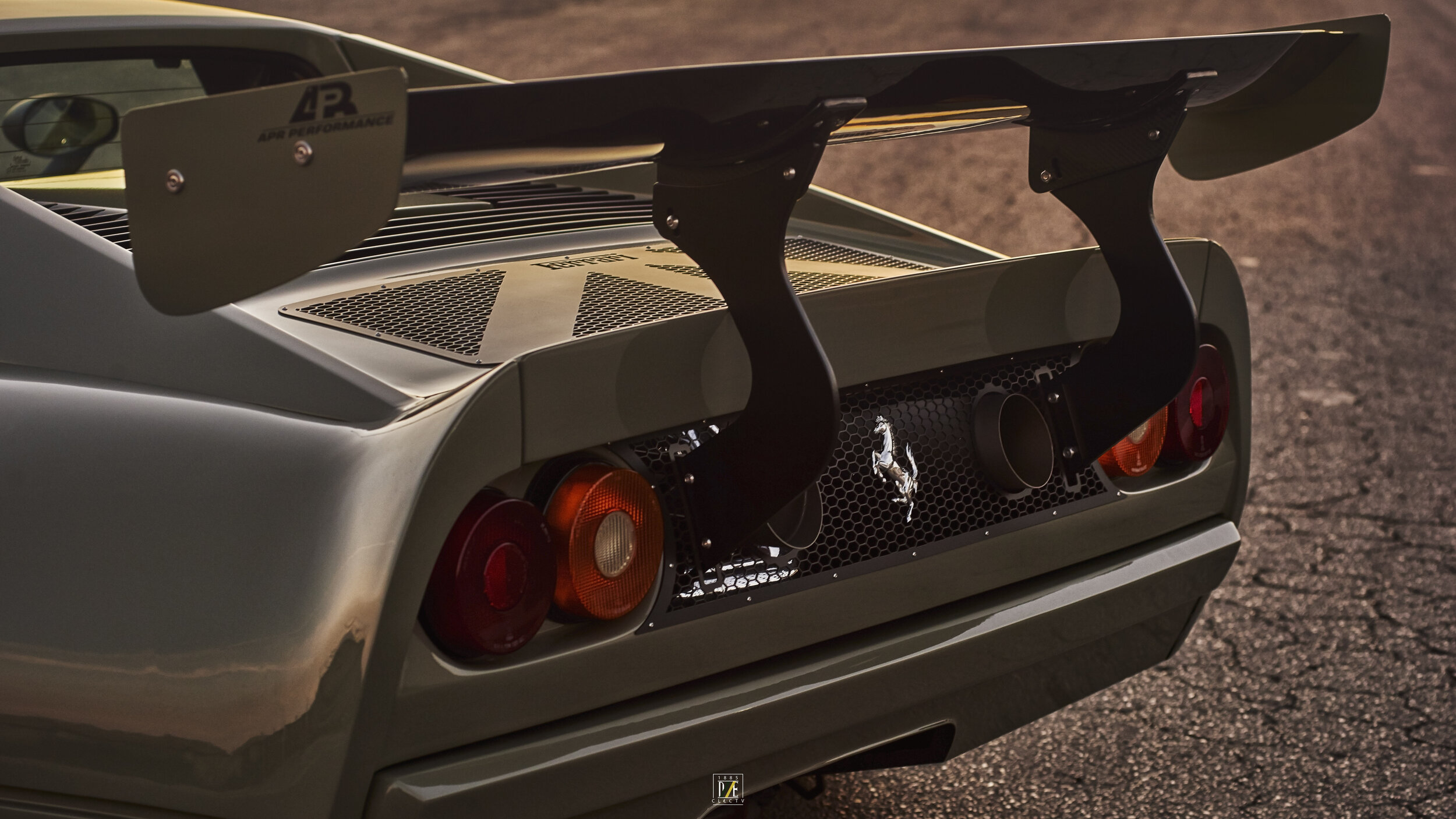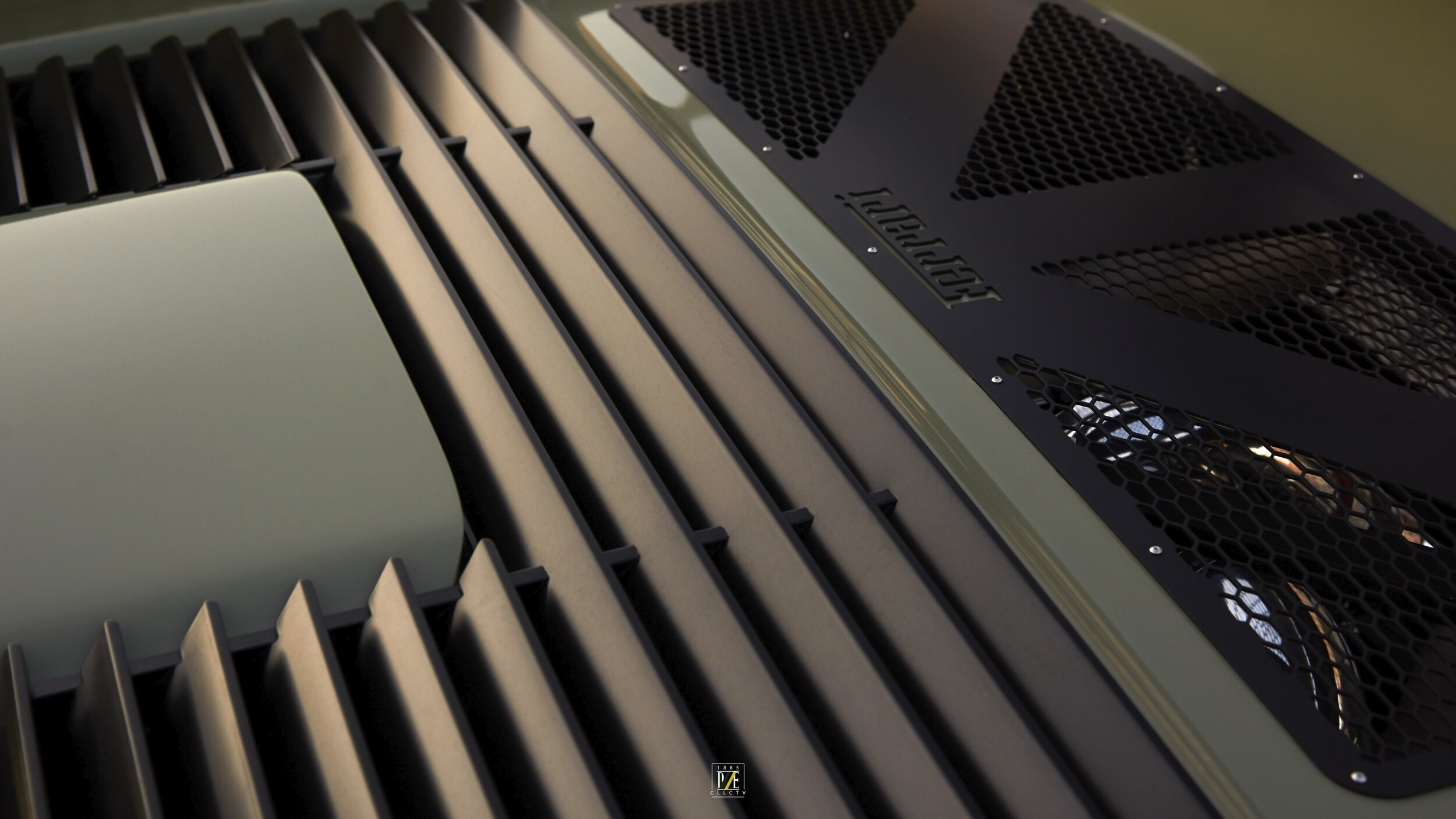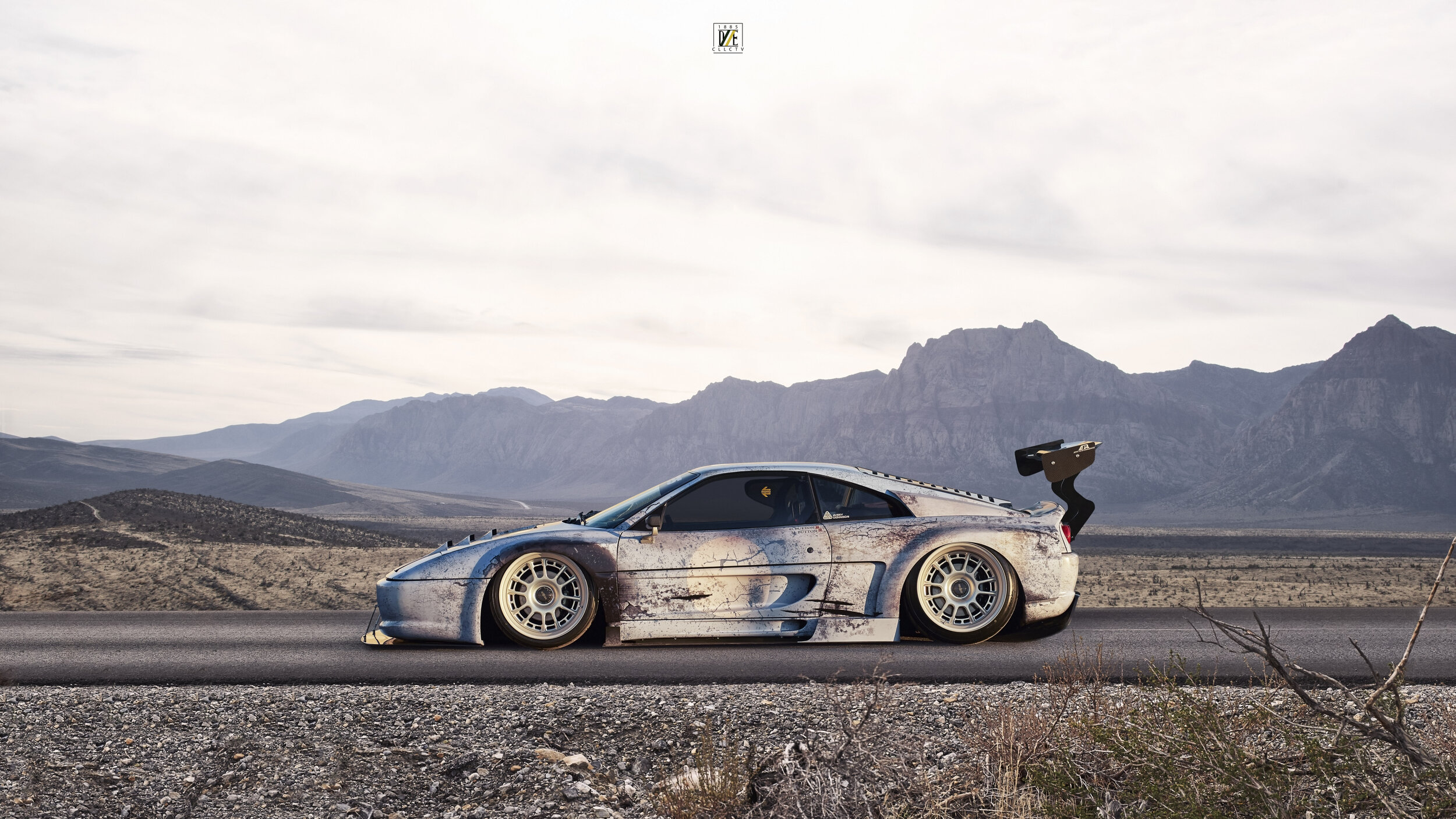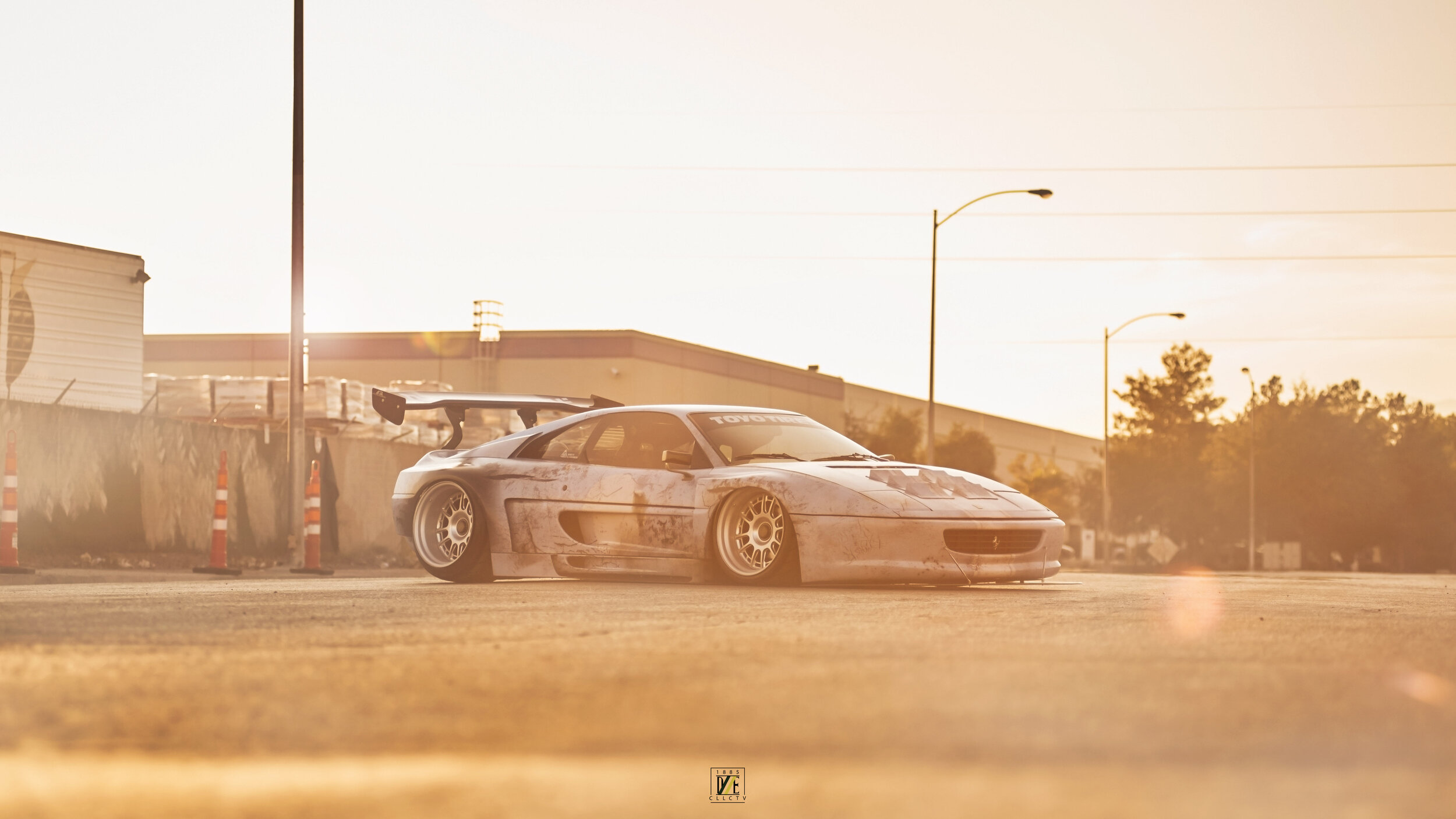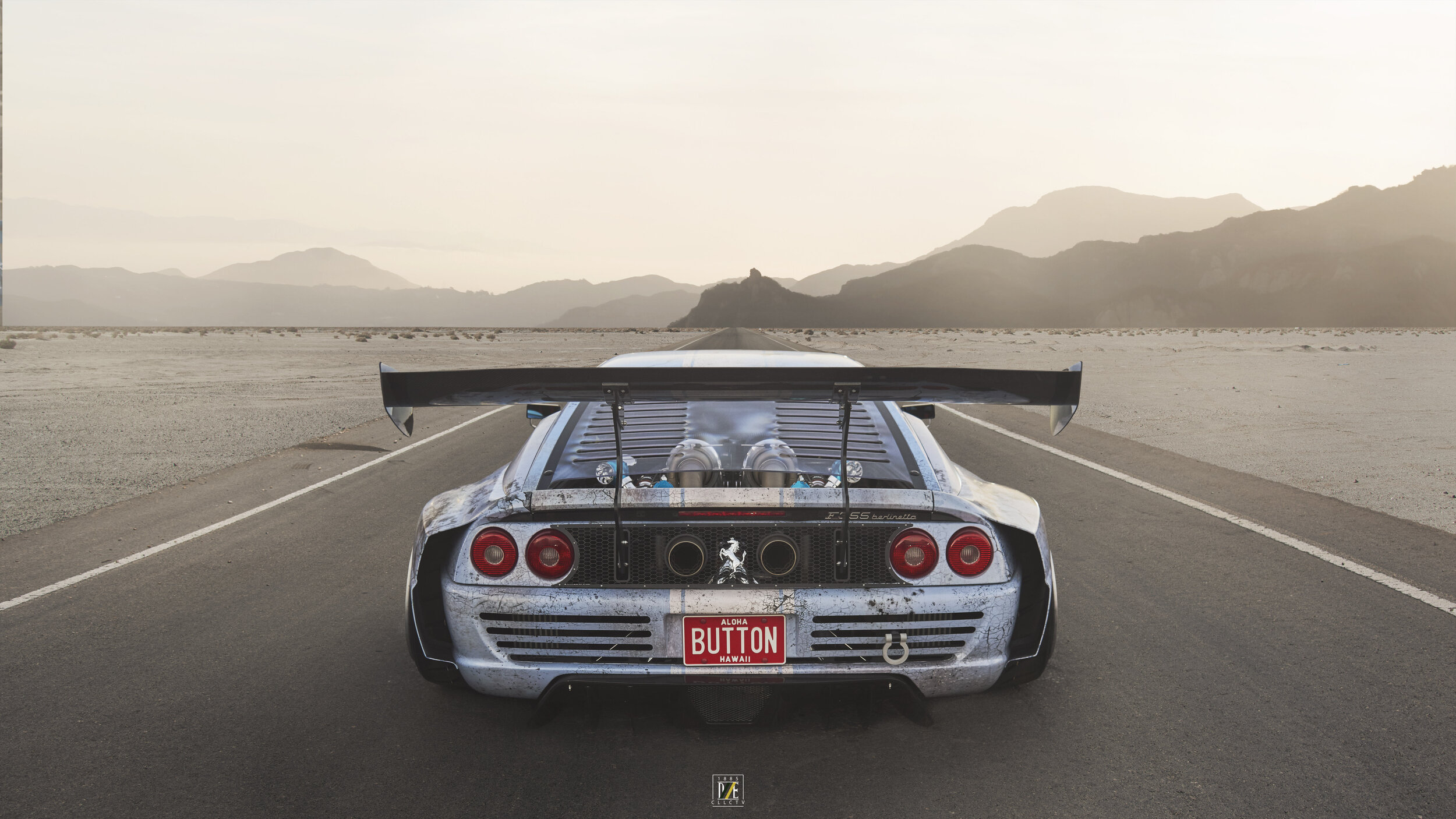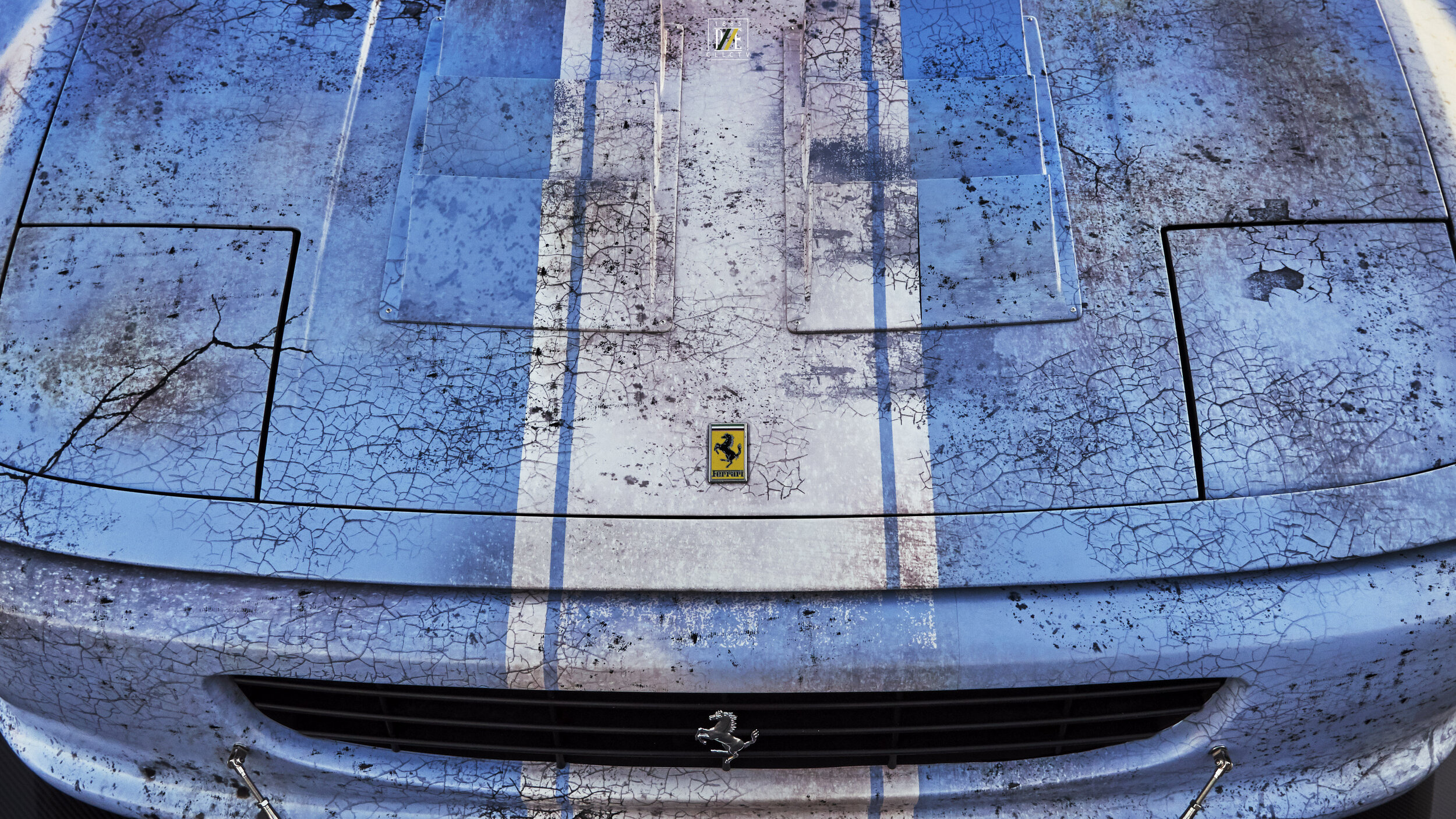FEATURES
Sharing our collective coverage of events, experiences, and featured stories
Bella, the Candy Apple RX7
This 1994 rotary-powered JDM legend needs no introduction. All an RX-7 ever needs is a dedicated owner and a respectful nod from anyone who comes into contact with it.
Nothing sounds like a rotary engine and nothing quite moves like one either. Not much from the ‘90s has such a commanding presence. The FD is an apex predator on the street and the track. It looks ready to strike even when standing still with the ignition off, yet the aesthetic appeal is one of elegance and fluid lines.
The look of this FD3S (JM1FD for North American models) named “Bella” is next-level aggressive thanks to four-stage Candy Apple Red paint, RE Amemiya GT-AD widebody kit, APR Performance GTC 300 rear wing, and custom-louvered hood. Undoubtedly, unless you’re hearing it pull up, those exterior details are the first things about this sports car that jumps out at you. Candy Apple Red is a bold statement: “I have arrived.”
Candy Apple Red with this widebody kit, front bumper resembling a ferocious menpō mask, and five-foot-plus-long carbon fiber wing kicks that statement up several notches.
Originally Vintage Red, Jon Togans bought Bella in 2010 from a private seller in North Carolina without seeing her in person. He found this FD on RX7Club.com after moving to Japan while in the Navy and selling his 187 FC RX-7 Turbo II.
“Of course, going to Japan as a car guy you typically look for these types of cars there: the GT-R, the RX-7, the NSX, Supra, and everything else that never came here to the States,” says Jon. “So I quickly got bit by the car bug again.”
Unfortunately, he had been deployed to the Pacific Ocean and flown to a ship just two weeks into his move to Japan, so he hadn’t been given time to indulge his car guy needs. But the ship had internet access, and the internet had car listings. Jon had the urge to own an FD RX-7, the means to acquire one, and, after it spent around nine months at a friend’s house in Virginia, the resources to have it shipped to his parents’ home in Las Vegas in 2011.
The prices of RX-7s hadn’t risen to the level they’re at now, so Jon also had the bankroll to stockpile parts. He collected every bolt-on he wanted—including two exhaust systems—along with coilovers. So, when he laid eyes on Bella for the first time a year after making the purchase, he started wrenching on her immediately.
Excluding professional bodywork, paint, and the second engine currently living underneath that custom-louvered hood (sourced from this FD’s previous owner four years after Jon bought it), Jon has put in countless hours over several years. He test-fitted the widebody kit, rear wing, and Rocket Bunny rear diffuser, and marked the hood himself for its louvers. He seems most proud of the hood: rather than buy an aftermarket, vented, carbon fiber hood, he opted to vent the stock, lightweight aluminum unit. The louvers are courtesy of a Vegas hot rod shop and make a powerful statement of their own.
“People are really drawn to it,” Jon says of the hood. “They look at it and say, ‘Who makes this hood?’ I say, ‘Mazda and me.’”
Bella drives as great as she looks and sounds. This is due to a street-ported 13BTT featuring modified non-sequential OEM twin turbos; Atkins Rotary seal kit; GReddy pulley kit, twin intake kit and front-mount intercooler; ACT Stage 2 street clutch; and Magnaflow downpipe, cat-delete and titanium cat-back exhaust system. A street tune from California tuner Garage Life, estimated to make between 350 and 400 horsepower with about 16 pounds of boost, is managed through an A’pexi Power FC with Commander and GReddy PRofec B Spec II boost controller.
Whether cruising to a Gears & Grinds gathering on a lazy Sunday, carving a canyon or hitting the apexes on a track, Nitto NT05 tires wrapped around Work Emotion CR two-piece wheels, EBC drilled and slotted rotors, Hawk HPS brake pads, Stance GR+ Pro adjustable coilovers, and Mazdaspeed rear adjustable tow arms an front sway bar kit keep this FD pinned to the pavement and out of trouble. Jon flicks through gears using a B&M short-throw shifter topped with a Top Secret shift knob.
“You definitely feel like, even though it is a streetcar, you’re in a race car. The way the motor sounds, how quickly the turbos spool up—and I’m running stock turbos on mine that are just configured differently—the feel of it, the sound of it,” explains Jon. “The sound of the rotary is just distinct. Everybody loves the sound. No matter what kind of exhaust you put on it, it sounds great. The power is always there. The powerband is amazing, it doesn’t matter what type of driving you’re doing. It’s just an overall fun car.”
Jon has plans to bring Bella to the track this year. He’s a fan of racing and after many months of fine-tuning the suspension, this FD is ready to race. Jon also plans to spend less time turning wrenches and more time detailing and protecting cars; he’d like to open a wrap business and has taken classes to become a Clear Bra specialist. Clearly not one to stand still, he has been helping his cousin with his own RX-7, a recently purchased 1999 FD that will go in a milder direction than Bella. Oh, and there’s also the R32 Skyline GT-R in his garage...
The Rebellion Forge Racing E30
When this savage machine first entered Ross Gredys’ life almost a decade ago, it was a rust-free E30 with a blown head gasket intended to get him to work and back. Gredys turned his $900 investment into something priceless with build partner Kyle Ray.
After pulling the original M20 motor instead of repairing the blown head gasket, Gredys hit the forums and discovered how much aftermarket support the E30 enjoys. So, he made another investment: a used Honda Civic that would be his daily while he ripped apart the E30.
Over the course of nearly ten years, this E30 has been stripped down to bare metal and experimented on by Gredys and Ray, business partners in Rebellion Forge Racing. Gredys, by trade, is a skilled welder and fabricator. That sexy as hell but menacing exhaust—the centerpiece of this spectacular build—is a testament to his talents. He also grew up around hot rods: his grandfather judged the World of Wheels shows for around 30 years.
Ray, as evidenced by these pictures, is an accomplished automotive painter. He also counts bodywork and mechanical engineering as weapons in his automotive arsenal. To create the eye-catching color, he drizzled onto the RFR E30, he started with Porsche Olive Green added a touch of his own to create the final mix we can’t stop starring at.
Every seam on the E30 has been stitch welded. Inspired by motorsports, the front and rear of the chassis were cut off and replaced with tubular steel. Suspension components were fabricated in-house, including tubular rear control arms and machined parts upfront. Gredys made his first roll cage and installed it in this car. In fact, Gredys says that this car was always meant to be a dedicated track weapon, and may still become one in the future. When asked to describe this 500HP Club member’s road manners, Gredys says it’s violent.
“It’s a very visceral, very raw car,” he says. “Everything that’s been done to that chassis is race car. When you get in it you feel everything, you hear everything... It’s just—it’s very violent.”
Before ever receiving the invite to show the E30 at SEMA, Gredys had decided it was time to finish the E30...as much as any project car is really ever “finished.” After eight or nine years using it as a testbed to figure things out before working on other client cars, the E30 looked worse for wear. But it obviously had the potential to become a masterpiece and calling card.
“It was kind of ugly because it was beat up, and there were a lot of mismatched parts, but I’m like, ‘We really have something here,’” says Gredys. “It was kind of like that perfect storm where it was in a spot where Kyle—my business partner,—and I had kind of already made the conscious decision like, ‘Okay, we’re gonna finish this car.”
Call it chance, divine intervention, destiny, fate or good fortune, but in 2018 the perfect storm Gredys and Ray found themselves in took an intriguing turn: Khyzyl Saleem and Eric Penelow dropped the Live To Offend body kit you see adorning the RFR E30. Gredys reached out the day he saw the kit, RFR and LTO started corresponding regularly, and Gredys’ exhaust work impressed Saleem and Penelow.
The E30 then caught another set of incredibly influential eyes: Meguiar’s. They wanted the car at their SEMA 2019 booth. When Gredys received that call, he thought, “There no frickin’ way.” During his talks with LTO about bringing the RFR E30 to SEMA, Gredys assumed that the car would be displayed somewhere outside the Las Vegas Convention Center. But then Mike Pennington from Meguiar’s called and invited RFR to bring their E30 to the Central Hall booth. Gredys and Ray were excited but now the situation was very real and the pressure was on. After all, the E30’s boothmate would be a car brought in from New Zealand that he estimates to be a million-dollar build.
“We already thought the bar was high—we just kinda launched it into outer space,” says Gredys of the Meguiar’s invitation.
Once again, the E30 was stripped down to bare metal, this time for sandblasting. Over four-and-a-half months, it was carefully reassembled with great attention to detail. Gredys and Ray had been experimenting with the car for close to ten years: everything they had learned and perfected came into play to make it SEMA-worthy.
Due to time constraints, Gredys and Ray chose to outsource the engine, to a point. The duo had machined several parts and collected others over the course of a few years but the clock had been working against them. The ferocious heart of this monster, a six-liter aluminum short block LS3 with Texas Speed Stage 3 cam, was assembled by high-horsepower application specialist Nick Smithberg and Sid Anderson of Smithberg Racing in Fort Calhoun, Nebraska. Smithberg built LS6 cathedral port heads to pair with the LS3.
Ultimately, the RFR E30 would finish top three among the Battle of the Builders Young Guns at SEMA 2019. Gredys largely credits his business partner Ray for the achievement. Working long hours at his fabrication and building business meant that Gredys relied heavily on Ray to complete the build in time for SEMA.
“He was the guy that was putting in a lot more hours as far as making sure that everything was getting done and put together,” says Gredys. “He did all the bodywork on the car. He was the one that painted the car. He’s a very, very talented individual.”
Those who have seen the car in person can attest to the staggering amount of details vying for attention. There’s the custom, in-house fabricated exhaust system, of course. The attention-pulling customized Porsche Olive Green paint. The extreme LTO widebody kit. But there’s one detail—perhaps “detail within a detail” is more accurate—in the interior of which Gredys and Ray are particularly proud.
The shifter bezel was fabricated in-house, designed to encompass a brake bias switch for easy access. But it also houses a slot for a Haltech USB for engine management. And without that USB stick in place, the E30 won’t start—the key for the ignition is one-off brilliance. Why did they do this? Because Ray thought it would be cool if their key was the Haltech USB stick. He was right.
The Button Built Ferrari’s
We weren’t expecting to see Button Built Ferraris in Las Vegas at the 2019 SEMA Show. Mitch Button, proving the scene should be as entertaining as it is boundary-pushing, pranked us all on Instagram two days prior to the preeminent Las Vegas automotive gathering.
Neither the Grigio Medio BB328T nor “distressed” Azzuro la Plata BB355TT would make it to Vegas due to a “mishap” during transport to the shop for final SEMA prep, claimed Button Built’s post. Luckily, the joke was on us. Not only did both Buttons arrive—the BB355TT was parked at the Toyo Tires Treadpass and the BB328T was displayed by AccuAir on the back of the CTP Concepts “Nighttrain” hauler—Das Erbe rolled out to the Vegas desert with them after the show.
Mitch and the Button Built team are among the elite of a new breed of builders. To these visionaries, honoring the heritage of marque or model doesn’t mean restoring the original work someone already did decades ago, resulting in a nearly unattainable garage queen. Instead, Button Built pays homage to heritage by giving admirers and inevitable detractors alike a new way to see and engage with storied car companies and their legendary creations. He also respects the individual car and their previous owners.
When the BB328T was still a stock 1988 Ferrari 328 GTS, it spent its life on the East Coast being cared for by a single owner who faithfully maintained it and kept meticulous records. It was also one half of an identical pair: the owner who sold the car to Mitch had purchased one for himself and one for his son. Unfortunately, the son passed away. Mitch felt he needed to honor not only Ferrari but also the relationship between this father and son that was now intertwined with the Button Built story.
Perhaps Mitch was destined to purchase and build the 328 GTS. Born into what he describes as “redneck poverty,” if he hadn’t strived for greatness, had he just let fate decide the direction of his life, he probably wouldn’t have ever seen a Ferrari up close, let alone own one. If his father hadn’t instilled in him a strong work ethic, a love for maintaining and modifying cars, and the aspiration of owning a Ferrari, the cars on your screen right now wouldn’t exist. Mitch grew up idolizing Enzo Ferrari, and these cars are his homage to his idol. Neither build would have materialized if he hadn’t been brave enough to leave home at the age of 15 to pursue greatness, live his passion, and make his name known in the automotive world.
When Mitch reaches into automotive history, pulls out iconic models, and molds them into his vision for today, he does so literally and figuratively. Both widebody systems were designed and molded in clay by hand to create the carbon-Kevlar body panels. Most of the original body of the 328 GTS was handbuilt by Italian coachbuilder Carrozzeria Scaglietti. Transforming this particular Prancing Horse into the BB328T meant handcrafting a body of Mitch’s own design, including the hood; front and rear bumpers; front wings and carbon fiber rear wing; rear quarter and rocker panels; and a bespoke targa top.
The 1999 F355 Berlinetta, designed by Pininfarina, was the last of the regular Ferrari models (as much as the term “regular” can ever describe a Ferrari) to be handbuilt. Creating the BB355TT once again included sculpting a widebody system by hand, including the hood vents; front fenders; front and side splitters; front and rear bumpers; rear quarter panels, wing and diffuser; C-pillar and rocker panel ducts; canards; and acrylic engine cover. Like the BB328T, the BB355TT was wrapped by Impressive Wraps. The “battered” Azzuro la Plata wrap is a nod to Ferrari’s motorsport history: it’s the color of the 250 SWB Ken Miles drove in the 1966 24-hour race at Daytona International Speedway.
By now you’ve likely worked out that “BB” stands for “Button Built.” And I bet you’ve figured out the “T” and “TT” designations as well. Mitch boosted the BB328T’s performance from 270HP to over 400HP with a Xona Rotor turbo, TiAL Sport blow-off valves and wastegates, and CSF intercoolers and radiators, along with a list of other goodies. While the Xona Rotor, TiAL and CSF hardware certainly isn’t OEM, an intercooled, single-turbo setup isn’t new to the 328: Ferrari created such a variant based on their 208 Turbo’s V8 in 1986.
The BB355TT rocks—you guessed it—twin Xona Rotor XR5455 Echo Series symmetrical turbos (one rotates counterclockwise, meaning each half of the engine mirrors the other). The snails, along with TiAL blow-off valves and wastegates, CSF radiators and intercooler cores, Aviva Instruments intercoolers, and other parts plus tuning by Voodoo Engineering’s Eric Cheney bump the standard 40-valve V8’s 375HP to 600-plus.
To 135 Years of Passion!
Welcome to the launch of Das Erbe Collective!
We’re setting off on a journey to honor the heritage of automotive culture that has driven so many to travel the world and beyond to reach their passion. It’s our mission to follow this journey for petrol and the passions that truly connect us all. Yes, our stories will be automotive-inspired. Yes, we will also feature all passions that connect our driven culture. And yes, all of these stories and much more will be shared with you each week.
As we enter 2020 and welcome enthusiasts to celebrate the launch of Das Erbe Co. with us, we have to ask: What does the number 135 mean to you?
For vintage and classic car aficionados, they may call to mind the sweeping lines of the Delahaye 135, a French coach-built touring car crafted from the mid-1930s to the mid-1950s.
Those more in tune with modern cars likely think of the BMW E8X 135, produced from 2007 to 2013 and powered by either the N54 or N55 engines.
For us—and lovers of all things automotive—135 represents the years since the very first production example of a machine with which we’re all enthralled (some would say obsessed) rolled into the world in 1885, 135 years ago.
It was in 1885 that designer and engineer Karl Benz completed the Benz Patent-Motorwagen (he was awarded his patent in 1886 on January 29), a three-wheeler powered and propelled by an internal combustion engine: a rear-mounted 954-cc single-cylinder four-stroke engine also designed by Benz. The Patent-Motorwagen used a single-speed transmission and was made with tubular steel, steered via a tiller, and produced between 2/3 and 0.9 HP.
The automobile has existed in three different centuries: the 19th through the 21st. If we could go back in time with a collection of vehicles and show and tell Benz what people have achieved with his invention, he would likely be unable to process how far humanity has taken the automobile.
Not everything would be foreign, of course. Benz obviously grew up around carriages, so he’d be familiar with coachbuilding. Until the 1900s, most automobiles were motorized carriages and stagecoaches. In fact, fellow innovators Gottlieb Daimler and Wilhelm Maybach—themselves engine designers—chose to install a 1.1HP engine into a carriage in 1886. They had invented the world’s first internal combustion motorcycle the year prior.
Getting back to Benz. As a designer of engines himself, he would understand he was looking at a modern-day internal combustion motor if we popped open a hood for him. Additionally, Benz would understand we moved on from tillers and other ways of steering cars to the modern steering wheel since it was invented in 1894. And It’s safe to assume he had seen a Ford Model A before his death in 1929.
Benz would most likely understand the supercharger—the first is said to have been discovered in 1878 by fellow engineer Dugald Clerk while designing the world’s first successful two-stroke engine. Also, Benz’s compatriot and peer Daimler (their companies, of course, would one day merge to form Daimler-Benz AG, yet Benz and Daimler would never, by all reports, meet one another, even when Daimler sued Benz for violating one of his patents) received a patent in 1885 for a supercharger. Seventeen years later in 1902, a man in France, Louis Renault, patented the centrifugal supercharger.
Maybe he’d nod knowingly while being shown a turbocharged engine, even though the first production car with one wouldn’t appear until 1962: the Oldsmobile Jetfire. He was, after all, an engineer and engine inventor.
One thing Benz would certainly respect is the need to reliably control and stop all that power. His first automobile experienced a collision with a wall because it was challenging to control. Indeed, he’d be familiar with brake pads. After all, his wife and business partner Bertha Benz not only funded the Patent-Motorwagen with her dowry, she also invented the brake pad in 1888.
In August of that year, Bertha took a Patent-Motorwagen Model Number 3 on the first long-distance road trip (121 miles) by internal combustion engine with the couple’s two teenage sons to generate publicity for their automobiles. She performed the duties of a mechanic, refueled with a petroleum product called ligroin at a pharmacy (thereby creating the world’s first-ever filling station), and asked a shoemaker to nail leather to the brake blocks when they wore down. Bertha accomplished all that in 1888 with a 2HP engine capable of a max speed of 10MPH and managed to make a couple of revolutionary automotive inventions along the way.
To mark this revolutionary journey, a parade of antique automobiles honors Bertha’s trip every two years in Germany, and the Bertha Benz Memorial Route was officially approved in 2008, making it an official member of the European Route of Industrial Heritage.
Now, imagine explaining the levels of torque and horsepower we’re now capable of reaching. Remember, Benz’s first automobile couldn’t generate a single, full horsepower. As mentioned above, the most powerful model of Benz Patent-Motorwagen had a whopping 2HP engine. Consider trying to explain to Benz the concept of hypercars boasting well over 1,000HP, propelled from 0-60 in under three seconds. His Model Number 3 engine was capable of reaching just 10MPH. In startling contrast, the 2021 Lotus Evija has been announced as “the most powerful car to ever enter production” at 2,000HP, estimated to reach 200MPH. Would he feel that undeniable rush of adrenaline if subjected to such ferocity and speed? Would he scream? Be rendered catatonic? Now imagine explaining to him that we’re working on cars that drive autonomously…
Let’s take this hypothetical a few steps backward from the face-melting hyper EVs and everything else that has been created because of his invention. What if we “keep it simple” showing Benz the all-new 2020 Mercedes Maybach GLS 600, a pinnacle of luxury motoring manufactured by the successor to the Daimler-Benz merger. The starting price alone would most likely be unfathomable to Benz: The Patent-Motorwagen originally cost the rough equivalent of $150 in 1886. A 2020 Mercedes Maybach GLS 600 will likely start at $200,000.
“Mercedes” wouldn’t become synonymous with Benz's name before Daimler’s company, DMG, merged with Benz & Cie. in 1926. DMG officially launched the Mercedes brand automobiles in 1902. It took a wealthy businessman, marketing strategist, automobile entrepreneur and racing enthusiast named Emil Jellinek to commission what is considered to be the first “modern car,” the Mercedes 35 PS (“HP” to English speakers), for the brand name to become one of the most famous in the world.
Jellinek named several of his possessions and business endeavors after his daughter’s nickname, Mercédès. One of his enterprises was a racing team—also named Mercedes—and the team fielded two DMG-Phoenix racing cars on March 30, 1900, in the Nice-La Turbie Hillclimb race. During the race, one driver, DMG chief mechanic Wilhelm Bauer, was killed after his DMG-Phoenix coach collided with a barrier.
Bauer’s death motivated Jellinek to demand what would prove to be revolutionary changes still seen in today’s cars. Before Jellinek tasked Maybach and Paul Daimler (Gottlieb’s son) with creating a new engine and model, automobiles were mostly high-bodied, narrow and unstable motorized coaches that were difficult to handle. Jellinek specified a car that was long and wide with a light steel body. He wanted a powerful engine (35HP!) that would be affixed to the chassis and offer a low center of gravity.
Daimler 23 HP “Phoenix” racing car. The most powerful Daimler racing car of the time competed in Nice Week in March 1900.
The Mercedes 35 HP, designed in 1901 by Wilhelm Maybach and Paul Daimler, for Emil Jellinek
On December 22, 1900, Jellinek took delivery of the first-ever Mercedes. In March 1901, Jellinek would take several of these revolutionary machines back to the Nice-La Turbie Hillclimb, safely dominating the event. In that same year, the Mercedes brand was trademarked.
So, would the Mercedes-Maybach-branded SUV seem familiar to Benz? Would he find the proportions similar to horseless carriages and stagecoaches? What would he think after climbing aboard via the automatic running boards and sitting in the massaging driver’s seat, taking in the array of tech in the luxurious cabin? For that matter, what would Daimler, Maybach or Jellinek think of where we’ve led their innovations?
Would he fully grasp his enduring, 135-year-and-counting legacy? Would he understand the heritage of his invention, how it has become a global, multi-cultural phenomenon that has inspired passion, freedom, and advancements in not just his generation but every subsequent one since? We can only imagine, only hope that somehow Karl Benz knew he had changed the world.
We honor this legacy, passions, and the heritage—“Das Erbe”—by sharing these passions, the sense of community, and the automotive culture that has continuously inspired the world as we know it.
Here’s to the journey for petrol and passion!
Welcome to Das Erbe Collective!













